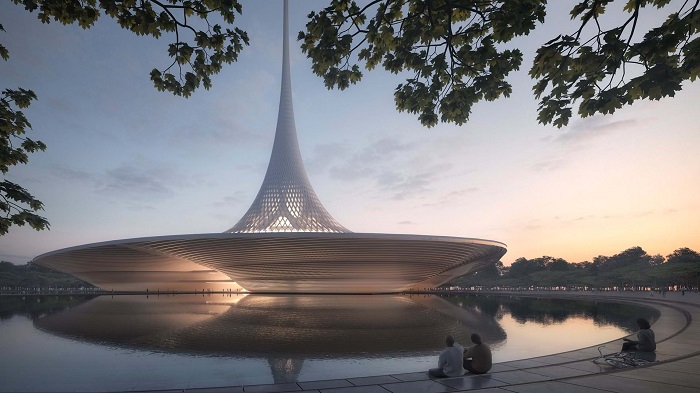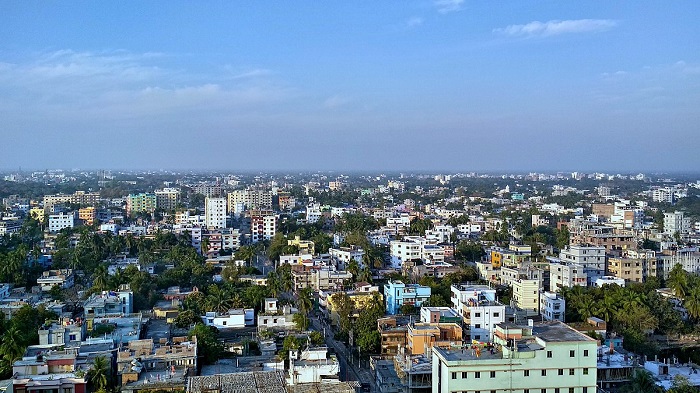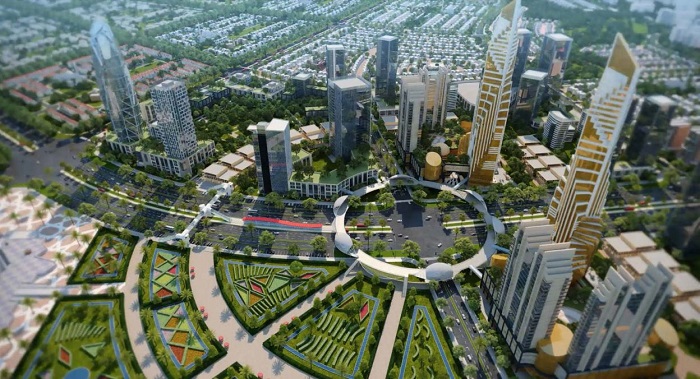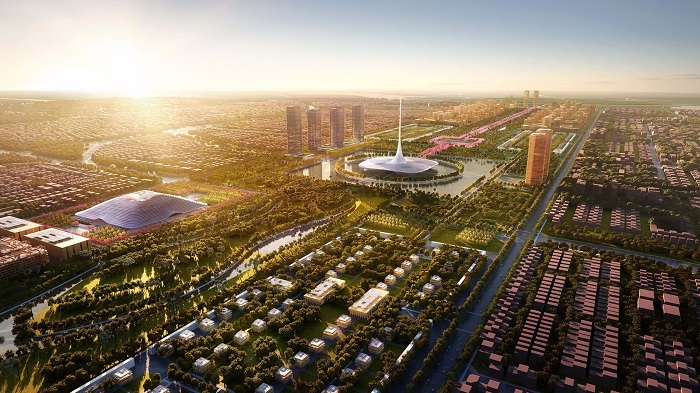ISABEL RUBIO ARROYO | Tungsteno
Bangladesh, Pakistan and India share something in common. They top the ranking of the most polluted places on the planet, according to the Swiss air quality company IQAir. Pollution is undoubtedly one of the environmental challenges of the century. Some cities in these countries are already working to reverse the situation and lay the foundations to become more liveable urban centres for their residents.
A vast natural lung in India
India is home to 22 of the 30 most polluted cities globally, according to IQAir's 2020 Global Air Quality Report. The most polluted months in cities like Delhi correspond to the agricultural burning season, which runs from October to December. "2020 was a particularly severe year for agricultural burning, an illegal but common practice in which farmers set fire to crop residue after a harvest," it notes. Added to this is the pollution produced by millions of cars, factories and construction sites.
Amaravati, a city designed by the British architectural design and engineering firm Foster + Partners and strategically positioned on the banks of the River Krishna, aspires to be one of the world's most sustainable cities. The 217-square-kilometre site is intended to be a natural lung: at least 60% of the area will be occupied by greenery or water. The idea is that the electricity that supplies the buildings will be completely green and come from renewable sources such as photovoltaics. In terms of transport, dedicated cycle routes will be built and the use of electric vehicles and water taxis will be encouraged. It is still too early to tell whether Amaravati will truly become one of the greenest cities in the world, as the project is still at an embryonic stage. It is expected that 3.5 million people will live in the city in 35 years' time.

Amaravati aspires to be one of the most sustainable cities in the world. Credit: Foster + Partners.
A breath of fresh air for Bangladesh
The atmosphere and rivers of Bangladesh, the world's most polluted country, are toxic. In 2016, the Buriganga River, which supplies some 180,000 people in Dhaka, ceased to support life. The tanneries in the Hazaribagh neighbourhood discharge an estimated 21,600 cubic metres of untreated and toxic waste into the capital's main artery every day, according to the Bangladesh Department of Environment. These discharges, together with the lack of sanitation systems and the rubbish dumped in the water, pose a health hazard to local residents.
This is just one example of how pollution has spread across this Asian country. But some cities in Bangladesh, including Rajshahi, have already begun to take steps to combat pollution. There was a time when it was necessary to shut windows in summer because of choking smog, a haze of dust and particulate matter typical of industrial cities. But this city, which borders India, has been completely transformed in just a few years. It now breathes cleaner air and enjoys a greener, less polluted environment.
The authorities have restricted diesel and petrol-powered vehicles on the roads, according to the Dhaka Tribune. In addition, many brick kilns, which emit toxic black smoke, have been moved away from the city. Those that still remain in Rajshahi now have better chimneys. Trees and flowers have also been planted in different parts of the city and rubbish is now collected daily and dumped only in designated places. In addition, machines have been installed to measure air pollution in real time. "If we find anything wrong, we take action immediately to keep the air pollution-free," Mamunur Rashid, deputy director of the Rajshahi Department of Environment, said in 2020.

Rajshahi has been transformed in recent years to reduce air pollution. Credit: Wikimedia Commons.
A green city from scratch, within Pakistan's capital
In Pakistan, polluted air is also endangering people's lives, charges Amnesty International. Prolonged exposure to polluted air "can cause serious health problems such as asthma, lung damage, bronchitis and heart problems and reduce life expectancy." In fact, a 2015 study published in the prestigious medical journal The Lancet indicates that nearly 22% of annual deaths in Pakistan are caused by pollution. "Something is very wrong when the air is so toxic that no one can breathe without getting sick," says Rimmel Mohydin, Amnesty International's South Asia campaigns officer.
There are some projects that represent a step towards a more sustainable future. One example is Capital Smart City, an initiative that aims to build a smart city in an area of Islamabad, the capital of Pakistan. A plot of land measuring almost 28,000 square metres has been set aside for the construction of residences and businesses using the latest technology. Although the first works to build this city began in 2018, the project is still at an early stage. The design of the city has been led by Surbana Jurong, a Singapore-based consultancy with expertise in smart city design.
In addition to smart homes and schools, Capital Smart City will have solutions to improve and streamline traffic congestion and energy distribution, and even reduce air pollution. The new city will have, for example, automated traffic lights and streetlights to control traffic and prevent traffic congestion and accidents, solar panels and a smart wastewater treatment plant. Its creators stress that the "natural elements of forests, hills and rivers surrounding the site provide opportunity for scenic views and potential green corridors."

Capital Smart City will feature solutions to improve and streamline traffic congestion and reduce air pollution. Credit: PK Marketing.
Taking steps to move towards a greener future is imperative in a world in which more than 90% of the global population breathes polluted air, according to the World Health Organization (WHO). Various studies have found that pollution is linked to respiratory infections; for example, it can cause asthma, according to the US Centers for Disease Control and Prevention. In addition, the WHO reports that around seven million people die each year from exposure to fine particles in polluted air. Countries around the world, including several Asian countries such as Bangladesh, Pakistan and India, are taking steps to prevent this with greener and more people-friendly cities.
· — —
Tungsteno is a journalism laboratory to scan the essence of innovation. Devised by Materia Publicaciones Científicas for Sacyr's blog.
